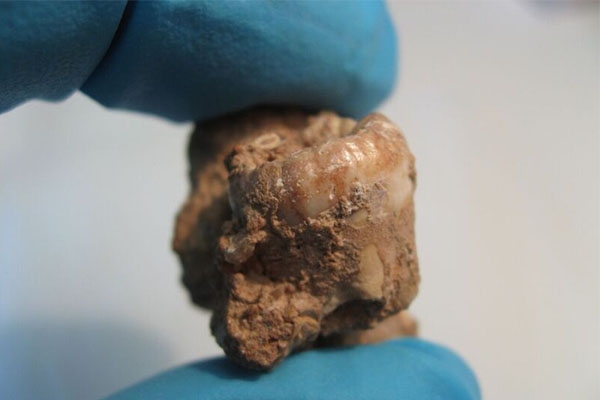
Neanderthals on cold steppes also ate plants
Neanderthals in cold regions probably ate a lot more vegetable food than was previously thought. This is what archaeologist Robert Power has discovered based on new research on ancient Neanderthal dental plaque. PhD defence 1 November.
Mammoth steppe
Plants were an important part of the menu of Neanderthals who lived in the warmer Mediterranean regions of Eurasia between 180,000 and 30,000 years ago. But paleoanthropologists had for a long time assumed that the same did not apply in colder regions such as the Mammoth steppes. The Mammoth steppe, a region of steppe tundra almost completely devoid of trees, was the dominant landscape from Central Europe to East Asia during the cold periods of the Pleistocene era. Neanderthals in these areas were thought to have been carnivores, eating virtually only the flesh of large wild animals. This very limited diet made this hominid species vulnerable and may well have contributed to their becoming extinct, anthropologists reasoned.

Plant consumption
Leiden archaeologist Robert Power discovered that Neanderthals must have consumed regularly plants as food even in this cold and dry environment. ‘The Mammoth steppe is an environment that we don’t really understand because it no longer exists due to climate change and megafauna extinction. It may well be that these ancient grasslands were far more useful to Neanderthals than we thought.’
New research methods
The lack of comprehensive methods for tracing food consumptions is the reason why researchers have difficulty in establishing ancient diets. Thanks to emerging microscopy methods, plaque has become a good source of traces of food that can now be analysed. Power studied microbotanical particles in the plaque of Neanderthals from six different archaeological sites, including Croatia, Italy and Russia. His results from 48 teeth found that in all regions Neanderthals regularly ate plant food.
Research on chimpanzees
Power also examined the reliability of dental plaque as a source in reconstructing diet. He did this by examining the plaque of a group of chimpanzees that had recently died from natural causes and whose diet was monitored over a period of 20 years. His findings confirm that plaque can be a reflection of diet over an extended period of life.
Diverse climatic zones and periods
Power compared data from different periods, and his research showed that, irrespective of climatic region and also irrespective of time period, plants were a significant part of the diet.
Neanderthals have unique pattern
Power: ‘One of the big lessons of my work on Neanderthals was that the only reason we find the result surprising is that we expect Neanderthals to resemble modern human hunter gatherers in the way they foraged for food, but they didn’t. In the past we saw them as primitive cavemen with very basic behaviour, but now we have updated our view and see them as very modern. But that doesn’t mean we can afford to pigeonhole Neanderthals into our own particular version of humanity. They had their own unique pattern.’
(Banner image: Artist's impression, Wikimedia Commons)
